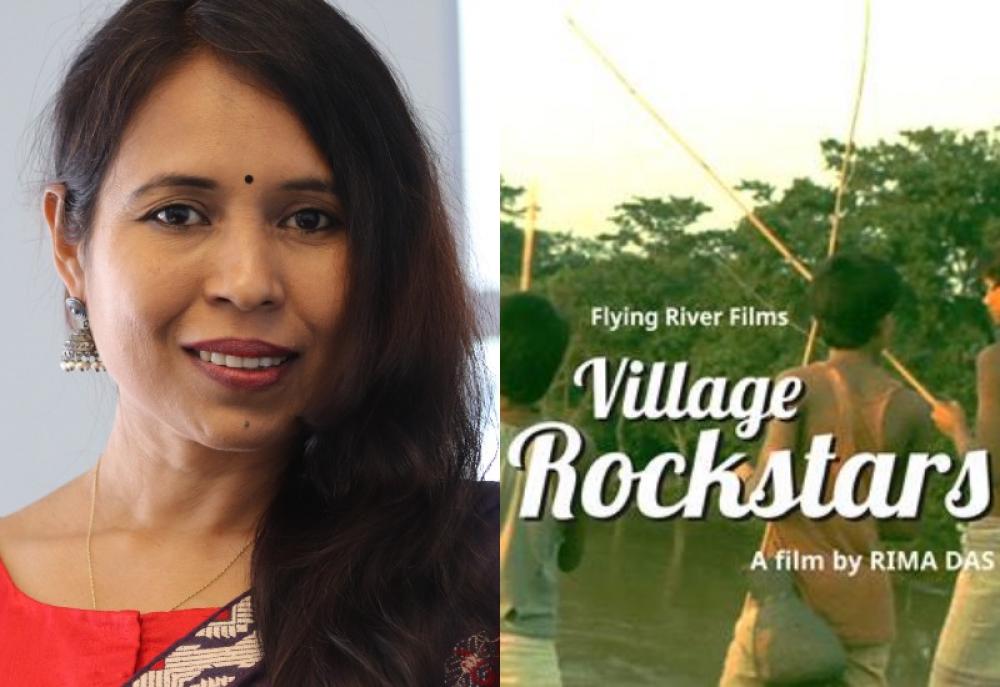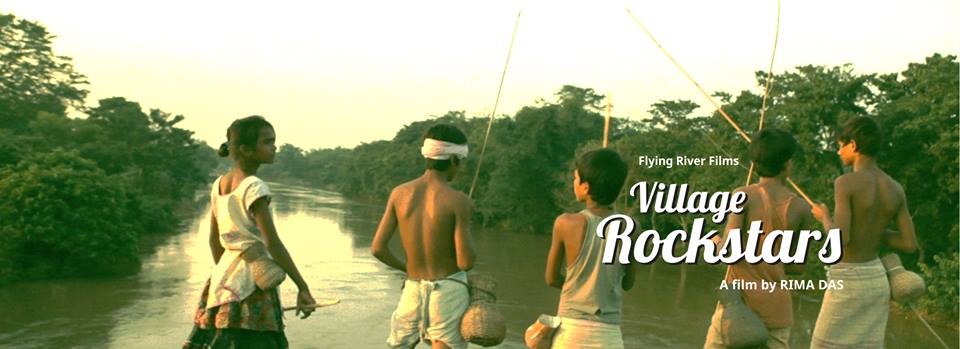Just Earth News | @justearthnews | 21 Sep 2017

Rima, you wanted to be an actor. How did you end up as a director?
I started as an actor and have been acting since my childhood. I was born and brought up in a very different kind of environment but grew up watching Bollywood films. Till the time I came to Mumbai (in 2007) I knew nothing about world cinema. It was in Mumbai where I got exposed to the larger film universe. Watching the international films, I somehow thought I could make a movie and tell my own story. I started with a short film, Pratha (2009). The film went to a couple of festivals and that gave me a lot of confidence to continue what I am doing presently.
"Antardrishti" (Man with the Binoculars) was your first feature film. What inspired you to make it?
When I decided on making movies, I tried a couple of short films, but the dream was always to make a feature film. I am someone who loves to express and I thought a feature was the best option for me to do so. It began somewhat like this...I was in my friend’s place and noticed a pair of binoculars. I was in the middle of finishing my short film and this friend was doing the background score. So as we spoke, he said that he had bought this binoculars for his retired father, who lives in a village. That was it...That was the starting point. Later on I worked on the story and developed the plot, which eventually took two years to finish.
You grew up in the same village where your film Village Rockstars was shot. Did you use the movie as a time machine to travel back to your past and relive your childhood?
After staying in Mumbai for nearly eight years, when I went back to my village to shoot my first feature film, Antardrishti (Man with the Binoculars), I realised what I was missing in life. In the city, we lead a materialistic life. Everything that we need is available there. Back in the village, after spending time there I realised what living in deprivation is. But these people were actually enjoying life. Yes, they endure hostility; they endure the natural calamities, but always move on. That inspired me.
Without naming anyone...I have seen many Indian films showing village life and mostly it’s about poverty. I don’t want that. I want to tell a positive story. I am from the same village and look I’ve made it to Mumbai and my films have been to various international festivals, so why just uplift the poverty. We need hope, we need positivity. Films that showcase urban lifestyle shows children playing video games...I wanted to offer something new and that is how Village Rockstars came by.
You shot for a period of three years to complete this movie. Keeping that in mind, the girl (actor) in the film must have gone through physical changes. Was it some sort of a challenge for you to keep the two, her growth physically and the story-line, intact?
Yes. It was very difficult to manage. For the first 18 months, everything went well, but later on I had to use some techniques (laughs)...I had to restrict myself from using too many long shots. Fortunately, her face didn’t change much!
So why did you drag it for three years?
Firstly, I was still in the post-production stage of my first film when I started shooting for the second one. Secondly, I had to travel to attend film festivals. Also because of the way I worked with the children...I worked with them in the morning before they departed for regular school and sometimes in the afternoon. With the shortage of a crew, I had to shoot the film in natural light, so that took a lot of time. Lastly, it was a learning process for me...Sometimes to get the perfect shot, I had to wait for ten-fifteen days. Another reason for the delay was that I wanted to show the whole season. A lot of sequence, the rains and floods are real. I wanted to make it perfect...At least to me. What the world thinks of my film is different, but I wanted to get the creative satisfaction.
When did you decide that film-making was your true calling?
As I said, I grew up watching Bollywood movies and after a period of time I realised that it was going to be hard for me to do a film...It needed a lot of funding and didn’t have much. Bollywood also uses a lot of songs and dance, which I couldn’t relate to. It was only after getting exposed to world cinema and watching certain international films, did I realise that I too could make a film...Like it could be done without dancing and singing. So I returned to my village, the place where I was born and shot my first film feature film there.
Rima, in your film Village Rockstars, you used a lot of non-actors, people who have never faced a camera before. Was it very difficult? How was the experience of working with so many children and ‘first timers’?
It was very challenging to be honest. But I love working with children...I feel I connect with them better. I feel like a child when I’m with my parents. For my first film, Pratha, I worked with children and somehow I retained that confidence. But I wasn’t that confident while casting the other characters (seniors), so I did a couple of workshops with them. Being an actor myself, helped me in that regard

Your film shows gender bias in society. Was it something that came on its own or was it a very conscious effort from your side?
Well, the story is about how the lead character, Dhunu, dreams of owning a guitar growing up in poverty and confronting natural calamities. It is all there...I could not have avoided it even if I wanted to. Gender bias exists in Indian society, in villages. But that was not by main theme. The movie is about hope and desire and how one dream even when faced with difficulties.
While discussing Indian films, especially by foreigners, Bollywood movies crop up. As a regional and independent filmmaker, are you happy with that or do you want that attitude to change? Do you think regional movies are underrepresented?
Probably yes, but again, it differs from one individual to another. At the moment, I am more into creating something. I still have a long way to go.
What are your future plans?
Making more and more movies (laughs).
Image: Radha Bose/IBNS and TIFF
Connect with Suman: @surasum and Sudipto: @maightyman